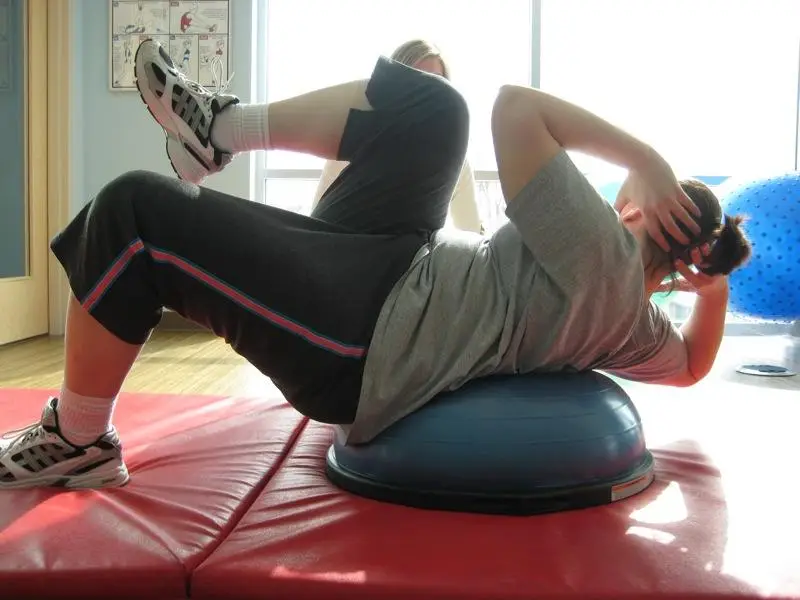Sleep is a crucial component of our overall health and well-being, but did you know that the position you sleep in can have a major impact on your spinal health? Many of us struggle with back pain, and one of the ways to alleviate that pain is by ensuring we are sleeping in the best position to support our spine. In this article, we will explore the best sleeping positions for spinal health and how they can help you wake up feeling refreshed and ready to take on the day.
Choosing the Right Sleeping Position for Lower Back Pain

When it comes to alleviating lower back pain, the way you sleep can make a big difference. Here are some of the best sleeping positions to help support your spine and reduce discomfort:
- On Your Back: This position is ideal for keeping your spine in a neutral position. Place a small pillow under your knees to help maintain the natural curve of your lower back.
- On Your Side: If you prefer sleeping on your side, try placing a pillow between your knees to keep your hips, pelvis, and spine aligned. This can help alleviate pressure on your lower back.
- Fetal Position: Curling up in a fetal position can also be beneficial for those with lower back pain. Just make sure to switch sides occasionally to prevent imbalances in your spine.
It’s important to experiment with different sleeping positions to find what works best for you. Remember, everyone is different, so what works for one person may not work for another. Consult with a healthcare professional if you continue to experience persistent lower back pain while sleeping.
Maximizing Spinal Alignment for Optimal Support

When it comes to maintaining optimal spinal alignment and support, the way you sleep can make a big difference. By choosing the right sleeping positions, you can help alleviate back pain and ensure that your spine stays properly aligned throughout the night.
On Your Back: Sleeping on your back is often considered one of the best positions for spinal health. This position helps distribute weight evenly and keeps your spine in a neutral alignment. To further maximize support, consider placing a pillow under your knees to reduce pressure on your lower back.
On Your Side: If you prefer sleeping on your side, make sure to keep your spine straight by placing a pillow between your knees. This helps prevent your top leg from pulling your spine out of alignment. Additionally, using a pillow that supports your neck can help maintain proper spinal alignment.
Avoid Sleeping on Your Stomach: While some people find it comfortable to sleep on their stomach, this position can put strain on your spine and neck. It can also cause your lower back to arch, leading to potential discomfort. If you must sleep on your stomach, try placing a thin pillow under your hips for added support.
Tips for Finding Comfort in Bed with Spinal Health in Mind

In order to prioritize your spinal health while finding comfort in bed, it’s essential to consider the best sleeping positions that provide adequate support to your back. Here are some tips to help you maintain a healthy spine while getting a good night’s sleep:
-
Sleep on Your Back: This position is often recommended by healthcare professionals as it allows your spine to rest in a neutral position. Place a pillow under your knees to reduce pressure on your lower back.
-
Try Side Sleeping: If you prefer sleeping on your side, ensure your pillow is at the right height to keep your neck and spine aligned. Place a pillow between your knees to prevent your top leg from pulling your spine out of alignment.
-
Avoid Sleeping on Your Stomach: This position can strain your neck and lower back, leading to discomfort. If you can’t break the habit, try placing a thin pillow under your pelvis to reduce the strain on your back.
In addition to adjusting your sleeping position, investing in a quality mattress and pillows can also make a significant difference in supporting your spine while you sleep. Remember, maintaining proper alignment is key to promoting spinal health and overall well-being.
The Impact of Sleep Position on Back Pain Intensity

In the quest for a good night’s sleep and optimal spinal health, the position you choose to rest in can make a world of difference. Your sleep position not only impacts the quality of your sleep but also the intensity of any back pain you may experience. Finding the right sleeping position that supports your back can be the key to waking up feeling refreshed and pain-free.
Here are some best sleeping positions for spinal health:
-
On Your Back: Sleeping on your back with a pillow under your knees can help maintain the natural curve of your spine and provide support for your lower back. This position is ideal for those with lower back pain as it reduces pressure on the spine.
-
On Your Side: If you prefer sleeping on your side, place a pillow between your knees to keep your hips and spine properly aligned. This can help alleviate any pressure on your lower back and reduce the risk of waking up with stiffness or pain.
Here’s a simple comparison of the impact of sleep positions on back pain intensity:
| Sleep Position | Back Pain Intensity |
|---|---|
| On Back | Low |
| On Side | Moderate |
| On Stomach | High |
Remember, the key is to find a sleep position that is comfortable for you while also supporting the natural alignment of your spine. Experiment with different positions and find what works best for your body to ensure a restful night’s sleep and a healthy back.
Q&A
Q: Why is it important to maintain proper spinal alignment while sleeping?
A: Proper spinal alignment while sleeping helps prevent back pain and discomfort during the day.
Q: What are the best sleeping positions for spinal health?
A: The best sleeping positions for spinal health are on your back or on your side, with a pillow between your knees.
Q: How can sleeping on your stomach affect your spine?
A: Sleeping on your stomach can cause strain on your neck and lower back, leading to pain and discomfort.
Q: Should I use a specific type of mattress or pillow for better back support?
A: It is recommended to use a medium-firm mattress and a contoured pillow to provide optimal back support while sleeping.
Q: Are there any exercises or stretches I can do to improve my spinal health?
A: Yes, there are exercises and stretches you can do to improve spinal health, such as yoga and Pilates.
Q: How can I create a comfortable sleeping environment to promote spinal health?
A: To create a comfortable sleeping environment for optimal spinal health, ensure your mattress and pillows are supportive, and your room is dark and quiet.
Insights and Conclusions
Choosing the right sleeping position can make a world of difference when it comes to back support and spinal health. By exploring various options and finding what works best for you, you can improve your comfort and overall well-being. Remember, it’s important to listen to your body and make adjustments as needed to ensure a restful night’s sleep and a healthy spine. Sweet dreams and sleep well!



